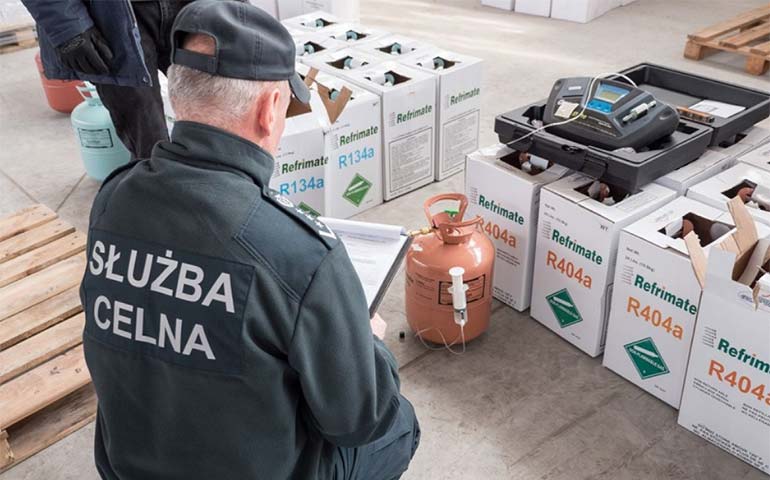EU phase down “on track” despite widespread HFC smuggling
12th November 2024
EUROPE: The amount of HFCs placed on the EU market in 2023 was 5% below the maximum quantity allowable under the European F-gas regulation, according to latest figures.
The latest annual figures from the European Environment Agency (EEA) report that the total supply of F-gases to the EU in 2023, measured in CO2 equivalents, was 10% lower than in 2022. This was attributed to reductions for both HFCs and SF6.

As a result, the EEA report insists that the EU remains on track under the F-gas regulation phase-down, ignoring the widespread reports of smuggling. The EEA maintains that these illegal HFC imports cannot be quantitatively accounted for. However, it continues to refer to these illegal imports as “alleged” despite multiple reported seizures and convictions by customs authorities, including action taken by OLAF, the European Commission’s own anti-fraud office.
Despite this glaring potential discrepancy in the figures, F-gas supply is reported at roughly the same level as observed in 2021 and about 45% below 2015.

Refrigerants for refrigeration, air conditioning and heat pumps accounted for around 70% of the total EU F-gas supply in 2023, measured in CO2 equivalents.
After a steady decrease of HFC imports in RACHP from 2016 to 2020, imports of HFCs in RACHP equipment increased by about 50% (in tonnes of gas) between 2020 and 2022. In 2023, there was a decrease of 13% compared to 2022, with imports back at 2021 levels again.
The EEA attributes the primary factor for the decrease in 2023, as compared to 2022, being the overall reduced imports of stationary cooling and heating equipment, as well as heat pumps.
Authorisations
As in 2021 and 2022, the use of quota authorisations needed in 2023 to cover imports of RACHP equipment under the HFC phase-down exceeded the amount of quota authorisations newly issued in 2023.
Compared to 2020, the amount of unused quota authorisations banked by equipment importers has decreased by 24%. However, the current size of the quota reserve still accounts for more than four times the amount of such equipment imported in 2023.
The companies that did not fully use their quota is said to have been counterbalanced by the “few cases” of quota exceedance by importers of bulk HFCs and equipment importers.
There was an increase in companies reporting on bulk HFC imports of 14% compared with 2022, but levels remain well below those of 2019 and 2020. Around 970 companies reported on bulk HFC imports in 2023, while the number of companies reporting on RACHP imports was 1055. The number of companies reporting on RACHP imports has been at around 1000 since 2017.
The EEA report – Fluorinated greenhouse gases 2024 – is available for download here.







